Mass production of plastics, which began just six decades ago, has accelerated so rapidly that it has created 8.3 billion metric tons—most of it in single use disposable products that end up as trash. (source NationalGeographic). A study, published back in July 13th 2017, in the peer-reviewed journal Science Advances, was the first global analysis of all plastics ever made—and their fate. Of the 8.3 billion metric tons that’s been produced, 6.3 billion metric tons has become plastic waste.
Of that enormous plastic waste volume, only 9% has been recycled.
Journal Science Advances
The vast majority—79 percent—is accumulating in landfills or sloughing off in the natural environment as litter. The remaining 12% has been incinerated. This implies that at some point, much of the waste plastic ends up in the oceans, the final sink, where it is doing untold damage to our sea creatures and aquatic life.
For the last 60 years, plastic consumption has continued to increase as this amazingly versatile and low-cost, fossil fuel derived material continues to excel at countless new applications, ranging from improving food safety and distribution efficiency to helping to create lighter, more fuel-efficient vehicles. Unfortunately, our collective ability to effectively recycle this material has been a dismal failure.
The rapid acceleration of plastic manufacturing, which so far has doubled roughly every 15 years, has outpaced nearly every other man-made material. And, it is unlike virtually every other material in it’s long life but short usefulness.
Half of all plastic manufactured becomes trash in less than a year, the study found.
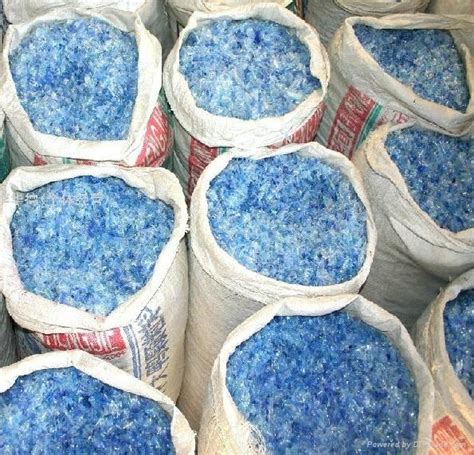
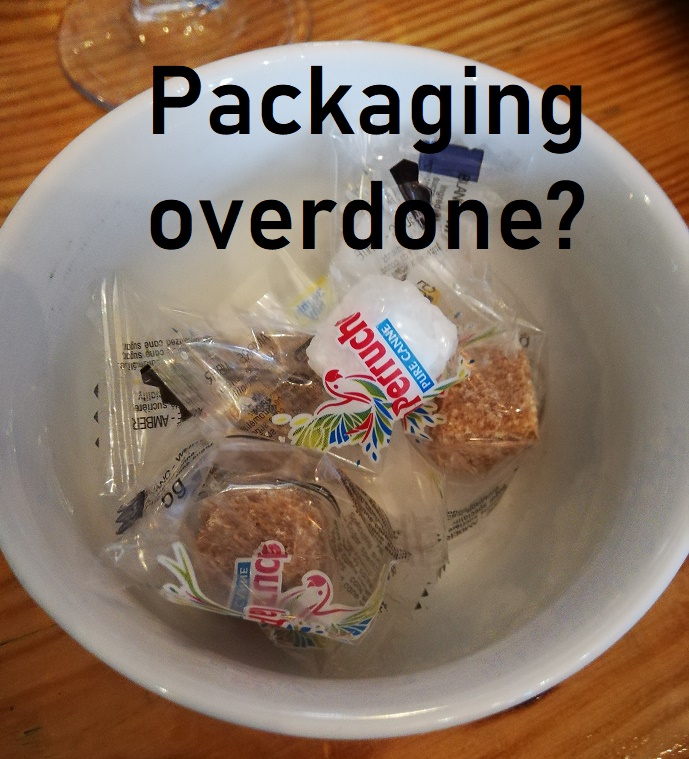
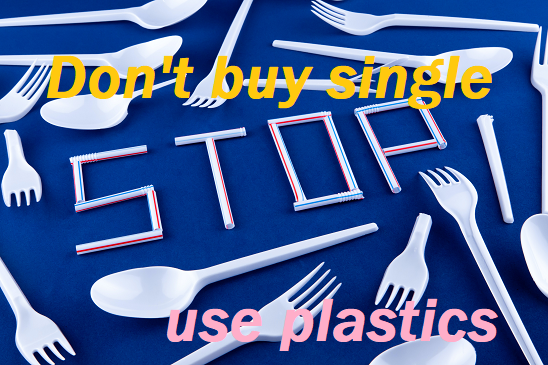
We recognize that an urgent systematic approach needs to be taken when looking at this recycling problem – embracing the entire product lifecycle.
So, we all need to step up our recycling efforts (as well as avoid buying any unneeded plastic items) and we should be clear about what types of plastic can be recycled or not.
Read on to decode the numbers.
NOTE: Where we refer to a ‘local authority’ in the advice below, it also includes ‘waste collectors’ acting on behalf of the local authority.
What is the difference between PET and HDPE Plastic?
We are often asked what the difference is between our two biggest selling types of plastic, PET and HDPE plastic; and whether these plastics are easy to recycle. PET plastic is generally the clear sort and is glass-like in appearance. HDPE plastic is more flexible and is opaque in appearance (e.g. black HDPE bottles).
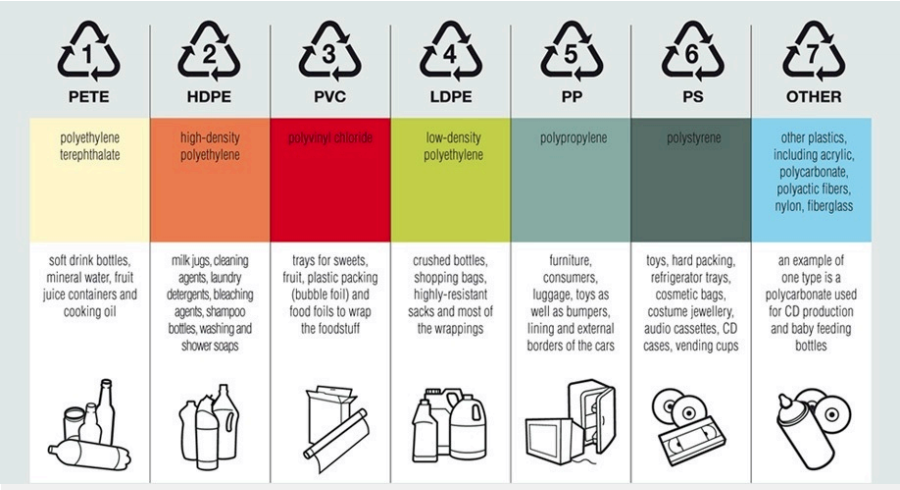
What is polyethylene terephthalate (PET)?
Polyethylene Terephthalate (PET, PETE or polyester) is commonly used for carbonated beverages, water bottles, clear plastic bottles and many food products. PET provides very good alcohol and essential oil barrier properties, generally good chemical resistance (although acetones and ketones will attack PET) and a high degree of impact resistance and tensile strength.
PET plastic is the most widely recycled. You can recycle this plastic if your Local Authority / Collector refers to:
- Plastic Bottles
- Fizzy pop bottles
- Mouthwash bottles
- Yoghurt pots (check the plastic before recycling as some can be made from polystyrene)
Recyclable?
YES. PET can be recycled into polyester fabric and filling for fleeces, cushions and carpets.
What are the properties of HDPE High Density Polyethylene?
High Density Polyethylene (HDPE) is the most widely used resin for plastic bottles. This material is economical, impact resistant, and provides a good moisture barrier. HDPE is compatible with a wide range of products including acids and caustics but is not compatible with solvents.
Recyclable?
YES. HDPE can be recycled. HDPE is often found in stiff, coloured bottles/tubs.
You can recycle this plastic if your Local Authority / collector lists:
- Milk Jugs
- Plastic bottle caps
- Bleach/detergent bottles
- Shampoo bottles
- Margarine tubs
- Ice cream tubs
- Carrier bags that can be stretched (Local authorities often don’t collect carrier bags, but can be recycled in local supermarkets).
LDPE (Low-Density Polyethylene) – Recyclable Plastic
LDPE has a lower density and has lower strength when compared to HDPE. This is a hard but flexible plastic. You will see it as plastic film and packaging like cereal box liners.
Recyclable?
YES. LDPE can be recycled. Rigid LDPE products (bottles, containers, lids, caps, etc.) typically are collected in curbside recycling programs. However, you will need to check with your Local Authority to ensure it is recycled in your area. Flexible LDPE bags and wraps are different. Clean and dry bags and wraps made with LDPE and HDPE are collected for specific treatment at specialist locations, like retailers. LDPE can be recycled into bin liners, floor tiles, compost bins, outdoor plastic timber. You can recycle this plastic if your Local Authority mentions:
- Bread bags
- Frozen food bags
- Squeezable bottles i.e. hand cream tubes
- Bubble wrap – if specifically mentioned
- Carrier bags that can be stretched – Local authorities often don’t collect carrier bags, but can be recycled in local supermarkets
Other plastic variants
PVC (Polyvinyl Chloride) – Non Recyclable Plastic
Recyclable?
NO. PVC is not recyclable in normal collections so avoid this where possible.
You can find this plastic in:
- Cling film
- Blister packaging
- Hoses
- Table Protectors
- Plastic pipes
- Plastic outdoor furniture
- PP (Polypropylene) – Recyclable Plastic
- PP can be recycled. However, you will need to check with your Local Authority to ensure it is recycled in your area. Polypropylene can be recycled into brooms, brushes, garden rakes and plastic trays.
You can recycle this plastic if your Local Authority mentions:
- Packing tape
- Plastic Straws
- Take away tubs
- Ketchup bottles
- Plastic picnic ware
- Plastic bags or film that can’t be stretched- these are not recyclable
PS (Polystyrene) – Non Recyclable Plastic
Polystyrene is not recyclable in normal collections. There are 2 types of polystyrene (hard, brittle plastic) and expanded polystyrene (light, insulating, waterproof plastic).
Polystyrene appears in:
- CD Cases
- Plastic forks
- Yoghurt pots (check the plastic before recycling, as some can be made from recyclable plastics)
Expanded polystyrene is found in:
- Foamy takeaway packaging
- Meat trays
- Packing peanuts
- Styrofoam
- Insulation
Other – Non Recyclable Plastic
Other plastics are not recyclable in normal collections. This categorises all other plastics including bioplastics, composite plastics (like crisp wrappers), plastic-coated wrapping paper and polycarbonate which contains BPA (Bisphenol A). BPA is a chemical used to make plastics, including food storage containers and refillable drink bottles. It’s also used to make some protective coatings and linings for food and drinks cans.
So, any type of plastic that has NO number for recycling is just going to landfill or incineration and that can be a big proportion of your waste e.g., rubbish bags, zip lock bags, cereal box liners, bubble wrap, styrofoam packaging, clear plastic wrap, bags used to wrap some food products, e.g., meat, fish, potato chips, cheese wrappers, 6-pack plastic and candy wrappers.)
Any plastic that has become soiled or contaminated is also not recyclable.
How to reduce your plastic waste burden.
The best way to avoid having a lot of plastic waste going to landfill or incineration is to avoid buying non-recyclable plastic in whatever form it arrives.
How will you achieve this in your daily life?
Purchase products that are not made from plastic or packaged in plastic where possible.
- USE reusable shopping bags (cloth bags preferred);
- BYOM Bring your own mug for coffee (eCupáns are a good flexible example);
- BYOB Get a glass or metal water bottle; refill as needed, instead of buying bottled water;
- FREEZE foods in glass jars, not plastic bags;
- BYOC Bring your own non-plastic containers to restaurants for leftovers (e.g. silicone or cardboard);
- AVOID plastic wrap on your dry cleaning;
- BYOU Avoid disposable plastic utensils by bringing your own metal, wooden or bamboo utensils;
- BUY foods in bulk when you can to avoid small portion containers
If you have other ideas, please let us know and we will happily share.
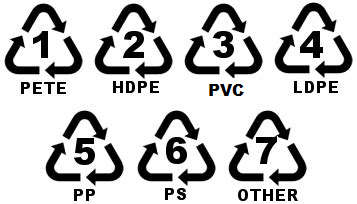
The RIC Numbers
The RIC (Resin Identification Code), a number from 1 to 7, appears within each recycling triangle symbol. Each number imprinted on a plastic product indicates the type of plastic resin that product is made from. The lower the number the easier to recycle.
The symbols were developed in 1988 by the organization now known as the US Plastics Industry Association. The symbols are currently administered by ASTM International, an organization that designs and sets standards for a wide range of industries, and go by the official name ASTM International Resin Identification Coding System.
The presence of a recycling symbol is not in and of itself an indicator that a particular plastic will be accepted at your local recycling centre or by your recyclables and waste collector. These labels can tell you what you should do to prepare the item for recycling (if applicable); whether it is widely recycled, recycled in only limited places or not recycled.
1
Inside the triangle indicates the plastic is polyethylene terephthalate, PET or PETE. This symbol is normally found on bottles for soft drinks and water; salad dressing, peanut butter, and vegetable oil containers; and mouthwash bottles.
PET bottles can be recycled into new containers, pallet straps, panelling, carpet and clothing fibres, and fill for soft furnishings and sleeping bags.
2
Inside the triangle indicates the plastic is high-density polyethylene, or HDPE. You can find HDPE in milk jugs, shampoo bottles, butter and yogurt tubs, motor oil bottles, shopping and trash bags, bags inside cereal boxes, and household cleaner and detergent bottles.
This plastic can be recycled into lumber, drainage pipes, pens, fencing, picnic tables, doghouses, benches, and floor tiles, in addition to bottles and other containers.
3
Inside the triangle indicates the plastic is PVC (vinyl or polyvinyl chloride). You can find vinyl in piping, siding, medical equipment, wire jacketing, certain clear food packaging, and cooking oil, window cleaner, detergent, and shampoo bottles.
Vinyl is rarely recycled. A tiny percentage of PVC is recycled into mats, speed bumps, cables, flooring, roadway gutters, mud flaps, paneling and decks.
4
Inside the triangle indicates the plastic is low-density polyethylene, or LDPE. This plastic is commonly found in shopping bags, squeezable bottles, carpet, furniture, clothing, tote bags, dry cleaning bags, and frozen food or bread bags.
LDPE is rarely recycled. When it is, it can be made into floor tile, lumber, panelling, shipping envelopes, compost bins, trash cans, and bubble wrap.
5
Inside the triangle indicates the plastic is polypropylene or PP. It is commonly found in medicine bottles, straws, bottle caps, ketchup bottles and syrup bottles, and some yogurt containers. This plastic is often chosen for bottles and containers that must accept hot liquids as it has a high melting point. PP is rarely recycled. When it is, it can be made into trays, pallets, bins, rakes, bicycle racks, landscape borders, ice scrapers, auto battery cases, brushes, brooms, battery cables, and signal lights. inside the triangle indicates the plastic is polypropylene or PP. It is commonly found in medicine bottles, straws, bottle caps, ketchup bottles and syrup bottles, and some yogurt containers. This plastic is often chosen for bottles and containers that must accept hot liquids as it has a high melting point. PP is rarely recycled. When it is, it can be made into trays, pallets, bins, rakes, bicycle racks, landscape borders, ice scrapers, auto battery cases, brushes, brooms, battery cables, and signal lights.
6
Inside the triangle indicates the plastic is polystyrene (PS), which is also erroneously referred to as Styrofoam, a trademarked brand of polystyrene insulation. You can find PS in disposable cups and plates, carry-out containers, egg cartons, and meat trays. It is generally considered to be difficult to recycle and has been banned in some places. It is possible to recycle PS into packaging and containers, as well as foam packing, light switch plates, and insulation by specialist processes.
7
Any plastic that does not fall under one of those six types has a 7 inside the triangle. These plastics include nylon and polycarbonate and are found in certain food containers, signs and displays, computers and electronic devices, DVDs, sunglasses, and bulletproof materials.
These plastics are almost never recycled, but they could be transformed into plastic lumber and certain custom-made products.
